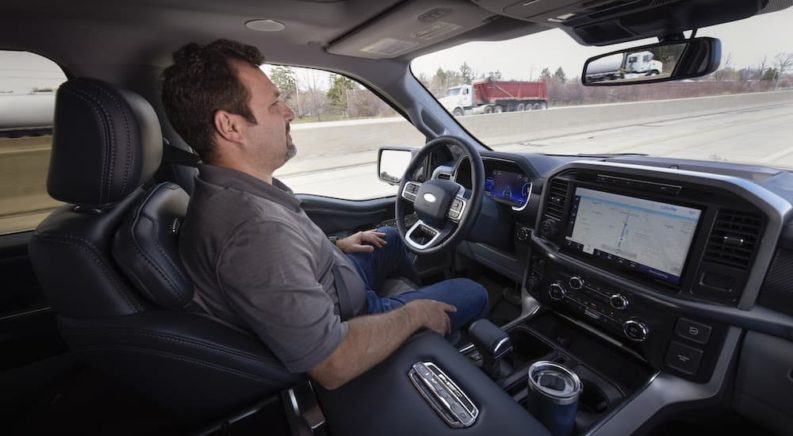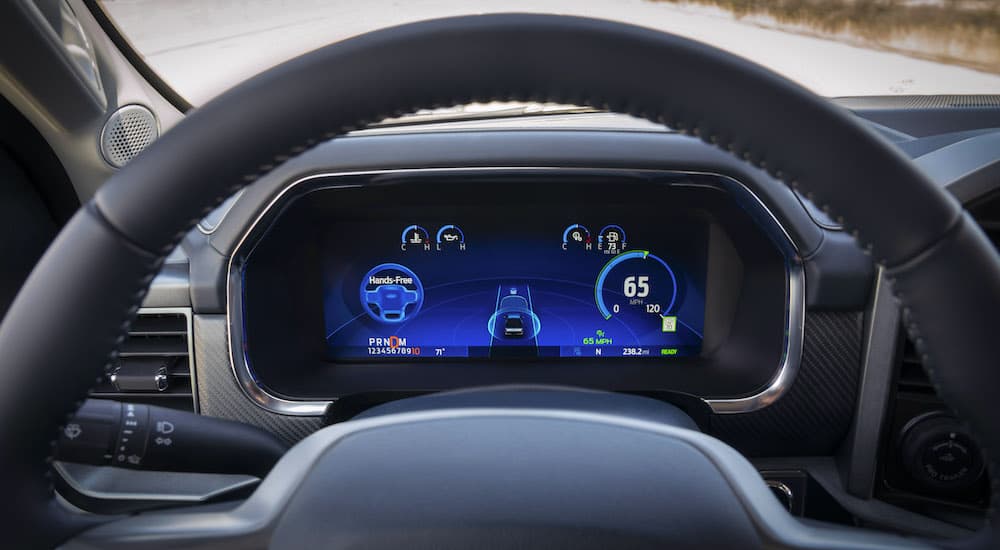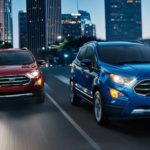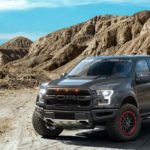Hanna-Barbera gave Americans a glimpse into the future in the popular series, The Jetsons, a cartoon set in 2062 that featured a realm of modern technology complete with robots and flying cars. As of 2021, we don’t have robots, but we do have virtual assistants like Siri, Alexa, and Google Assistant. So, where does that leave flying cars? Jetson-like transportation is still a figment of everyone’s imagination, but the industry is certainly moving in the right direction. Take a visit to your local Ford dealer, and you’ll see exactly why in Ford’s exclusive BlueCruise technology.
An Evolution of Technology
Cruise control was a huge advancement in the automotive industry when Ralph Teetor, a blind engineer, developed and introduced the feature in 1950. By the 1960s, cruise control was offered by every automaker and has remained a staple in vehicles ever since. Fortunately, the tool has evolved with the advancements of technology, and drivers now enjoy modern versions like Ford’s Intelligent Adaptive Cruise Control with Stop-and-Go that builds and improves upon Teetor’s original idea. Instead of having to constantly set and reset your cruising speed based on the flow of traffic, Intelligent Adaptive Cruise Control automatically does it for you by monitoring the flow of traffic whether you’re cruising at 70 mph on the highway or you’re stuck in stop-and-go, rush-hour traffic.
What does any of this have to do with BlueCruise? BlueCruise ushers Ford’s lineup into the next era of innovation. Just as Intelligent Adaptive Cruise Control with Stop-and-Go improved upon traditional cruise control, BlueCruise will do the same by offering yet another layer of convenience for drivers. This time, that convenience means a fully hands-free driving experience.
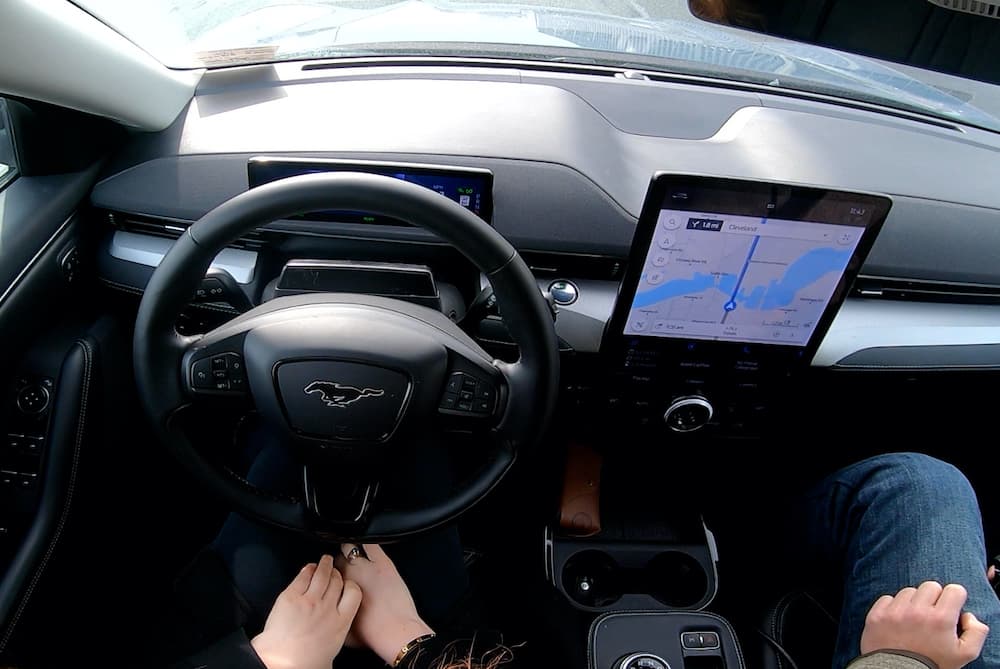
BlueCruise in Action
Although it’s not exactly a flying car, Ford’s BlueCruise is a step in the right direction and delivers a hands-free driving experience that makes your time behind the wheel more enjoyable. First introduced in 2020 as Active Drive Assist, BlueCruise made its official debut in 2021 on the Mustang Mach-E and the F-150 as part of Ford’s Co-Pilot360 suite of safety and driver-assist tools. So, how does it work?
BlueCruise relies on a suite of innovative technology to deliver a unique driving experience. The system relies on LiDAR map data and data from the vehicle’s navigation system to determine if the vehicle is traveling on a compatible highway (known as a “Blue Zone”). There are over 100,000 miles of Blue Zones throughout the United States and Canada, all of which BlueCruise can navigate using map data and radar.
Once you engage BlueCruise, the system relies on a driver-facing infrared camera in the steering column that’s known as a “driver monitoring system.” The system constantly monitors where your eyes are looking and the position of your head to ensure that you remain alert and focused on the road ahead. Simultaneously, BlueCruise navigates the roadway using lane-centering assistance, speed sign recognition, and Ford’s Intelligent Adaptive Cruise Control with Stop-and-Go to steer, accelerate, and brake as needed based on the road and traffic conditions.
What happens when you take your eyes off the road for too long? Ford recognizes that every driver is different; for example, some drivers are color blind while others are hard of hearing. BlueCruise acknowledges these differences and distinguishes itself in the segment by using a variety of communication methods to alert the driver to their inattentiveness. The system uses text cues through the instrument cluster, audible alerts, and blue lighting cues that even those who are colorblind can detect. This is a vast improvement over competing technology like General Motors’ Super Cruise, which relies on red and green lights that can be difficult for colorblind individuals to differentiate.
Ford Tested, Ford Approved
Would you unveil a new feature that you don’t have confidence in or fully understand? For Ford, that isn’t an option. Ford is renowned for building reliable and innovative vehicles that can stand the test of time and are backed by the Blue Oval. Technology like BlueCruise is no exception, as Ford pushed the feature to its limits before its official debut in 2021.
Launching the “Mother of All Road Trips,” Ford sent ten F-150s and Mustang Mach-Es on a 100,000-mile road trip that spanned 37 states and five Canadian provinces. What was the goal? To test BlueCruise in real-time and in every situation imaginable to gauge its performance and find areas of improvement. Tested in bustling urban centers, mountainous terrain, and even on some of the worst maintained highways in the country, BlueCruise stood up to every test and successfully finished the final leg in 500,000 miles of testing.
The Future of BlueCruise
Expect BlueCruise to make a significant impact on Ford’s lineup and revolutionize how we get from Point A to Point B. This is the future of traveling, and Ford is setting a high benchmark for what drivers should expect from autonomous driving tools. For starters, BlueCruise caters to the uniqueness of drivers with its multi-style communication system that blends text, visual cues, and audible alerts. This makes the tool more accessible and safer, with multiple layers of notifications ensuring your attention stays where it should – on the road ahead.
Just as Ford recognizes that every driver is different, the automaker also knows that every highway is different and that, over time, roads change. BlueCruise relies on regular map data updates, all of which are sent to your vehicle over the air to ensure the system operates on the most current information available. This adds another level of convenience since you don’t have to regularly update the software at the dealership and another level of confidence since you know that the technology is working with the latest data to help you navigate BlueZones throughout the country and beyond.
Along with offering up-to-date maps, Ford will also expand BlueCruise’s Hands-Free Blue Zones throughout the United States and Canada. This expansion will usher in a suite of new technology that will extend BlueCruise’s versatility. With Predictive Speed Assist, BlueCruise will automatically adjust the vehicle’s speed as needed to navigate roundabouts, curves, and other situations. Lane Change Assist will alter how we navigate highway traffic by allowing BlueCruise to change lanes safely and automatically once a turn signal is engaged. The system looks for vehicles in that lane and in the blind spots, making sure everything is clear before navigating your Ford into the designated lane.
Watch Out, Jetsons! BlueCruise Is Here
With The Jetsons, Hanna-Barbera gave viewers a glimpse into a future replete with modern technology that, even though innovative, still had its glitches. We’re looking at you, Rosie. These glitches made life with the Jetsons seem even more believable, especially today in a world where Siri, Alexa, and Google don’t always understand us the first time. Fortunately, this isn’t the case with Ford’s BlueCruise.
Put through over 500,000 miles of testing and the “Mother of All Road Trips” to ensure its operability, reliability, and safety, BlueCruise is a Jetson-like feature that will usher the Ford lineup into another realm and revolutionize how we travel. In fact, it’s already proved that it’s not like any other tool in the segment. While Tesla’s Autopilot requires you to keep one hand on the wheel, BlueCruise makes convenience more attainable and lets you take both hands off the wheel and confidently let your Ford do the work for you. This certainly gives new meaning to, “Look Ma, no hands!”

